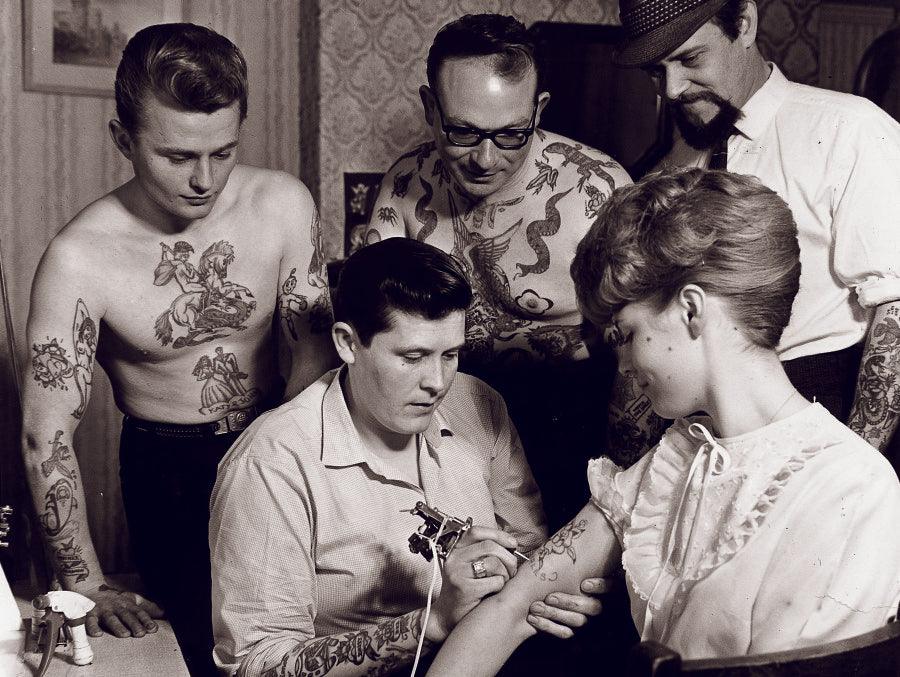

· By Nikita Jeppesen
A Quick History of Tattoos
If you're considering getting a tattoo, you might be surprised to learn that the first known tattoos were accidentally created by people during the Stone Age who were trying to decorate their bodies. Research shows the first tattoos were probably done with sharpened bones or pieces of wood dipped in soot, ash and other natural pigments.
Tattoos, or any form of permanent body art, have been around for thousands of years:-
The first evidence of tattoos dates back to the Ice Age when they were found on mummified bodies in Egypt. Dutch explorer Willem de Vlamingh and British explorer James Cook were among the first to document it.
In ancient times, tattoos were used as symbols of power or status. For example, warriors would get tattoos on their face as proof that they had taken someone's life (and thus deserved respect).
The first electronic Tattoo machine:-
The first electric tattoo machine was invented by Samuel O'Reilly in 1891. The machine was powered by a hand crank, which allowed for faster and easier tattooing than its predecessors.
Samuel O'Reilly patented the electric tattoo machine in 1891, and it was used to create tattoos on the body and face.
The electric machine was not widely adopted until after World War II, when they became more affordable with the invention of commercial electricity supply lines across America and Europe.

It was a crime to be tattooed until 1961:-
In England, it was a crime to be tattooed until 1961 and in the U.S., it wasn't until 1972 that tattoos were acknowledged as a form of expression. Before this, tattoos were considered to be associated with criminals, sailors, and gangsters—people who had something to prove—and so they were looked down upon.
"Tatu":-
The word tattoo is derived from the Tahitian word "tatu", which, in turn, has its roots in a Tahitian language called Marquesan. The Marquesan term “tatau” means “to strike” or “to imprint” and was first used to describe permanent body adornment by islanders in remote regions of Oceania as far back as 500 years ago.
Tattoos in Polynesia:-
- Tattooing was used to mark the passage of time and celebrate important life events, such as births and deaths.
- The Polynesians were also highly valued tattoos as spiritual adornments and used them for healing rituals.

The tattoo has enjoyed a renaissance over the past 100 years although there are still social stigmas surrounding them in some circles:-
Tattoos are becoming more popular, and for good reason. They are considered a form of self-expression, and people can use them to commemorate events or tell stories through their body art. However, in some circles they are still stigmatised because they were traditionally associated with criminals and other socially undesirable types.
However, as tattoos become more accepted in society, they no longer carry the same stigma that they once did. Employers are increasingly willing to hire people with visible tattoos even if those tattoos might be considered unprofessional or inappropriate at work (e.g., "no ragrets" on their forehead).
Parents also see these changes taking place: many parents today will allow their 18 year old children to get a small tattoo without much fuss as long as it doesn’t have any negative connotations.
Tattoo Aftercare:-
As tattoos continue to become increasingly popular, taking care of them should be of the utmost priority.
Dr Pickles Tattoo Aftercare is specifically formulated to act as insurance for your tattoos. Our Tattoo Balm helps to moisturize and protect the skin, which can help preserve the vibrant colours and sharp lines of your tattoos for years to come. Dr Pickles can help to minimise the risk of fading, cracking, and other forms of damage, additionally, our products are specifically designed to be gentle on the skin, making it suitable for use on all types of skin.
So, if you’re looking for a new way to express yourself, why not consider getting a tattoo? Whether you choose something small and simple or something elaborate and complex, there’s no denying that tattoos have come a long way over the past few thousand years. In fact, it wouldn’t surprise us if they continued on this trajectory into future generations. After all, what could be more permanent than ink in your skin?
Published: 18/1/2023 | Author: Nikita Jeppesen




